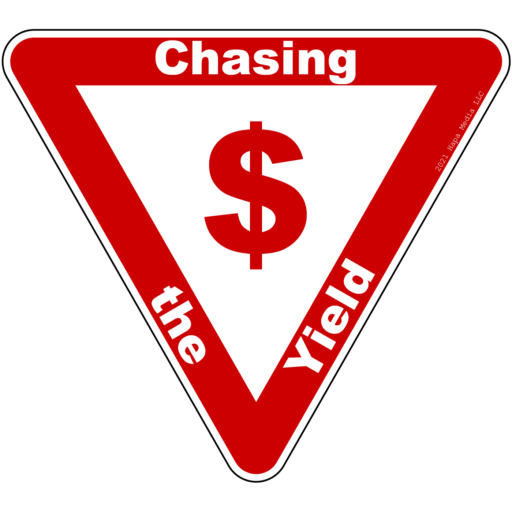
Dividend Yield Theory is the idea that a Blue Chip company’s dividend yield should hover around it’s average over some long period of time. Blue chip companies are boring, stable, and have business models that don’t change much. They are not necessarily growth companies like tech stocks but should maintain a stable stock price and are best able to recover from inevitable recessions and stock market crashes.
I’m still new to all of this but the theory around investing for dividends seems more natural than trying to figure out which company is poised for growth and bet on their stock price. Yes, you stand to make a great deal of money if you’re able to play that game and win. But, like most gambling, I don’t think most people are capable of guessing which company will be the sure bet.
My portfolio is currently divided into three sections. One is an IRA that is fairly conservatively invested. The companies in that portfolio don’t pay current high dividends but have steady growing dividends. I also reinvest those dividends in purchasing additional shares of the stocks in that portfolio.
The second section is one that I invest for income. It is a standard brokerage account and the stocks held there payout higher dividend yields with companies that might still provide dividend growth but the growth might be slower than those in my IRA. I’m more concerned about monthly cash coming in to help pay for my daily living expenses.
The third section is real estate that is not income producing. While technically real estate are expenses because of maintenance and taxes they are also investments because they generally appreciate in value over time. I moved from one part of the country to another and therefore selling one of my homes. I lived there for 32 years and the house appreciated in value over that period about 302%. If I spent zero dollars on upkeep, taxes and improvements I would have made out like a bandit. We of course didn’t. We put an addition onto the house, remodeled the kitchen, and added an outdoor deck. We most likely broke even dollar-wise which means we actually lost money if you take inflation into account. This is why homes that you live in are not investments. It’s more a store of money.
The proceeds from the sale of that house will be rolled into my second portfolio. That will increase my monthly dividend payments. I will add fourth section that will be dedicated to high dividend returns and will be far more risky than the other two.
In all three stock portfolios I will be investing for dividends. Two will be relatively passive and most likely will not change but once or twice a year. The third will have to be watched more closely and may involve moving in and out of stocks depending on the whether or not the company looks to cut it’s dividend and/or the stock price falls below a threshold I have yet to determine. My object is to maximize my dividend income with some margin of safety. I wish to minimize principal loss as much as I can. With the current economy and post-pandemic mentality I don’t think anyone truly knows what the future holds. There is far more uncertainty than there was prior to the pandemic.
Interest rates will continue to be low, it seems, and there is not much left for an individual investor other than looking to the stock market. Plus, I don’t want to get a normal job.
If you enjoyed this article please consider donating. Anything you contribute will help me put out better content more frequently.
Thanks.
Image by Albrecht Fietz from Pixabay
